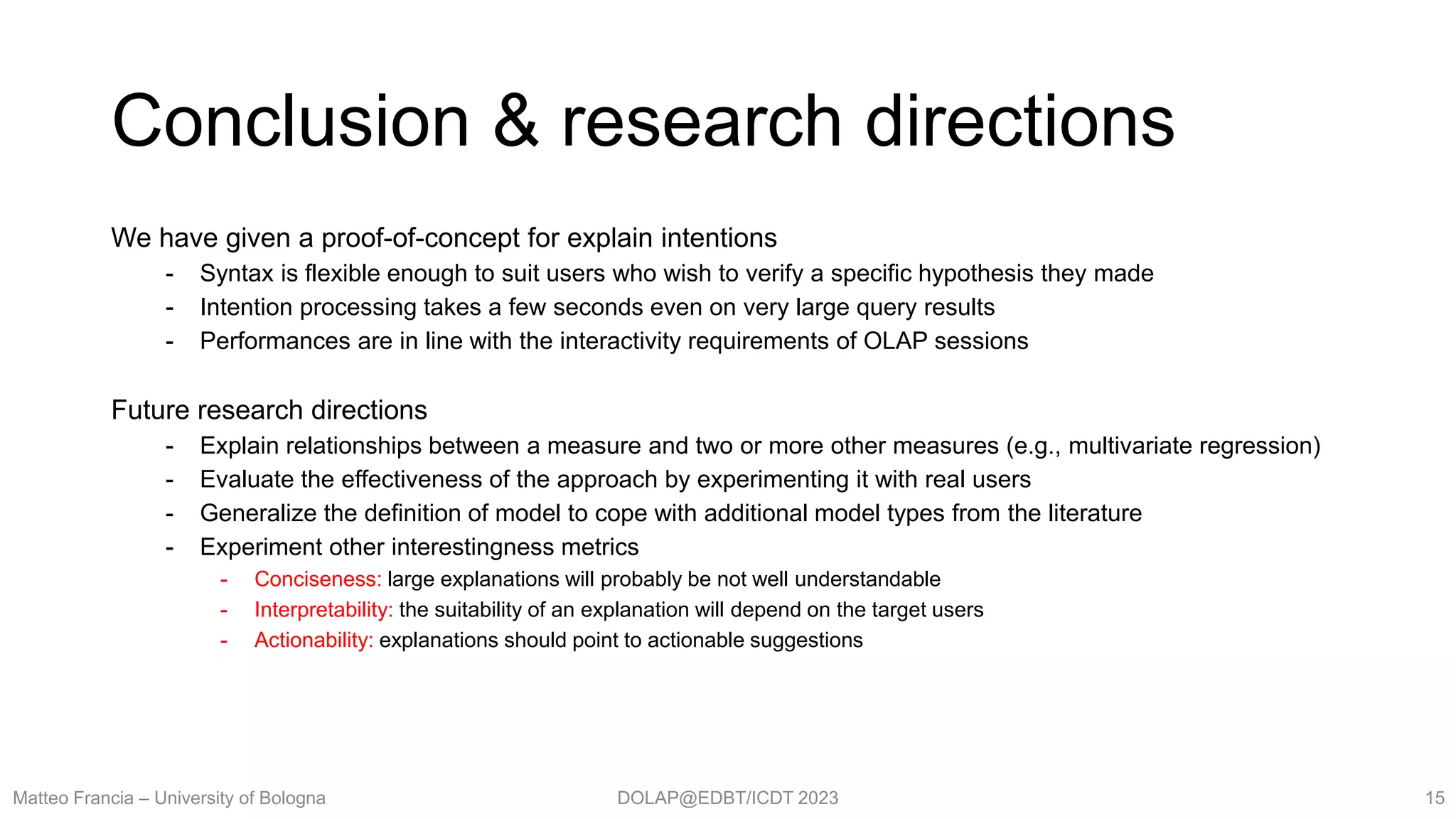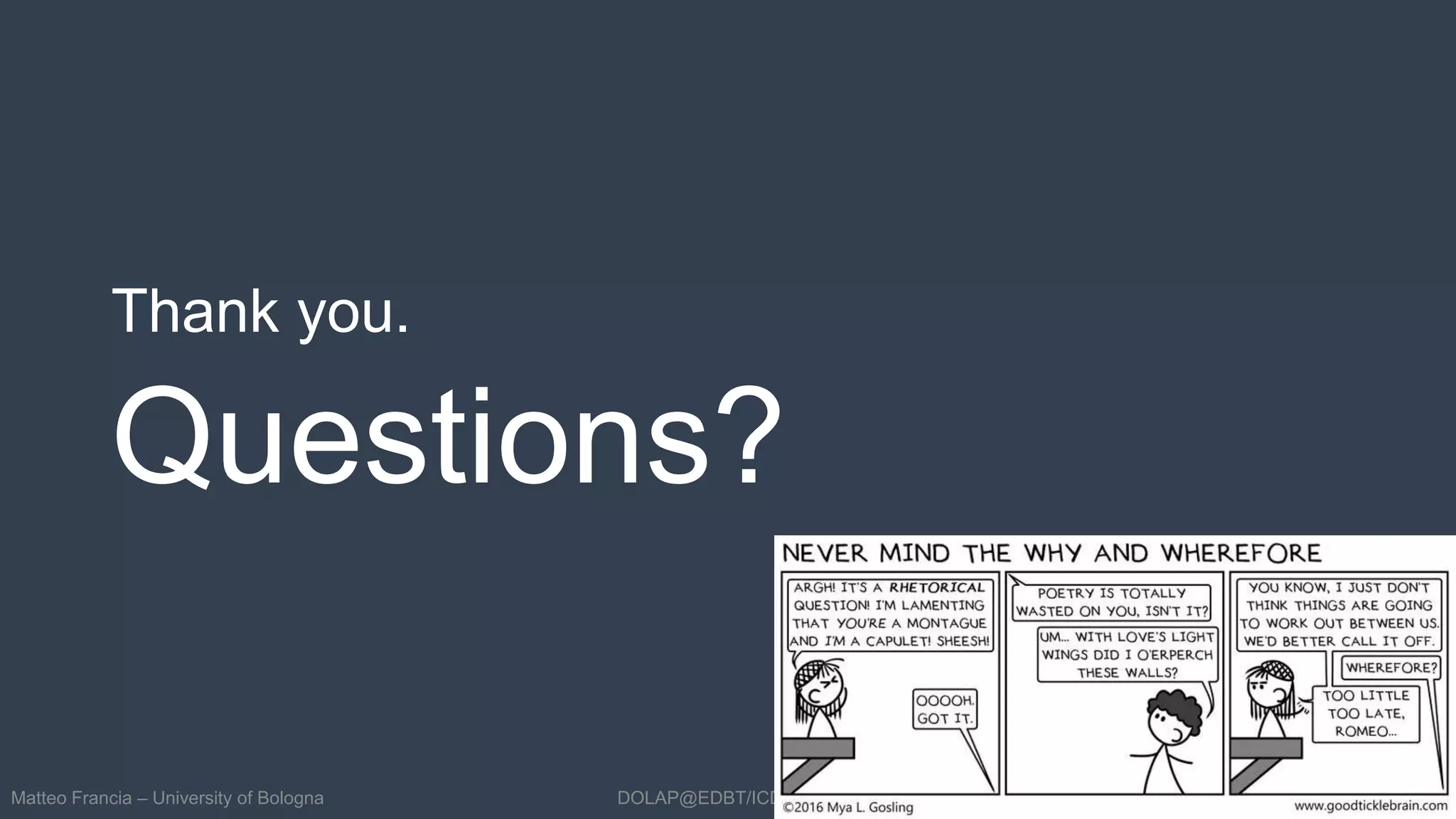The document discusses the Intentional Analytics Model (IAM) for enhancing OLAP analysis of multidimensional cubes, emphasizing the need to express high-level intentions rather than simple query answers. It presents a framework for automatically discovering and explaining relationships in data, utilizing polynomial regression as a proof-of-concept for identifying significant patterns and insights within cubes of data. The authors highlight future research directions for expanding the model to multi-measure relationships and improving the interpretability and actionability of explanations.
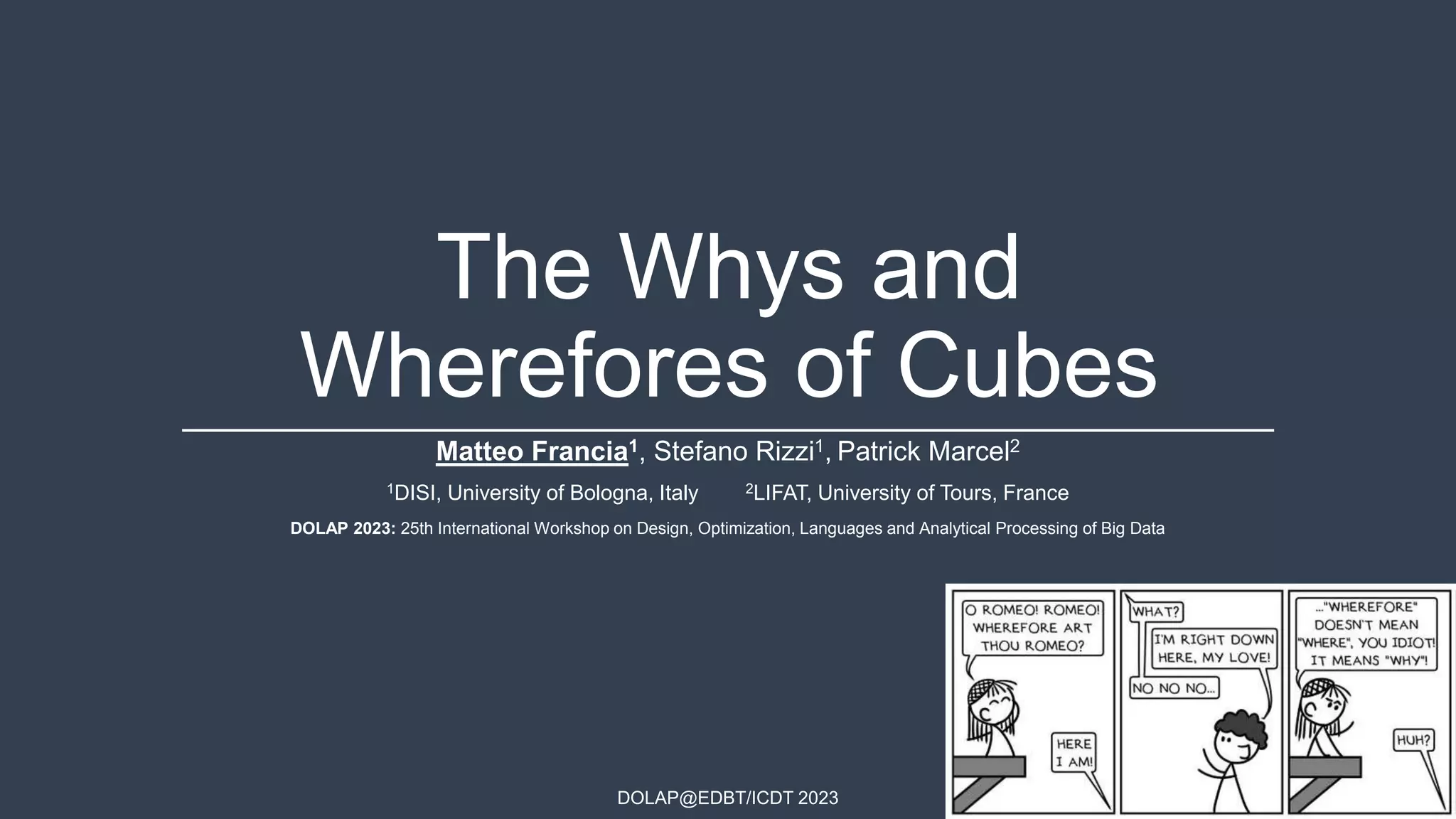
![DOLAP@EDBT/ICDT 2023
Intentional Analytics Model
Context: Intentional Analytics Model (IAM) [1]
- Facilitate OLAP analysis of multidimensional cubes
- Escape from query answers as plain tables
Express high-level intentions, not queries
- Describe, Assess, Explain, etc.
Get cubes enhanced with insights
- Apply (mining/ML) models to data
- Return interesting insights
Explain: finding interesting relationships in cube facts
- Data exploration: automatically extracts meaningful relationships from facts
- Validating user’s belief: check if known relationships hold
- In agriculture, the quantity of potassium is correlated with the quality of Kiwifruits.
Do facts confirm this belief?
Matteo Francia – University of Bologna 2
[1] Panos Vassiliadis, Patrick Marcel, Stefano Rizzi: Beyond roll-up's and drill-down's:
An intentional analytics model to reinvent OLAP. Inf. Syst. 85: 68-91 (2019)](https://image.slidesharecdn.com/slides-230328124515-687c8704/75/DOLAP2023-The-Whys-and-Wherefores-of-Cubes-2-2048.jpg)
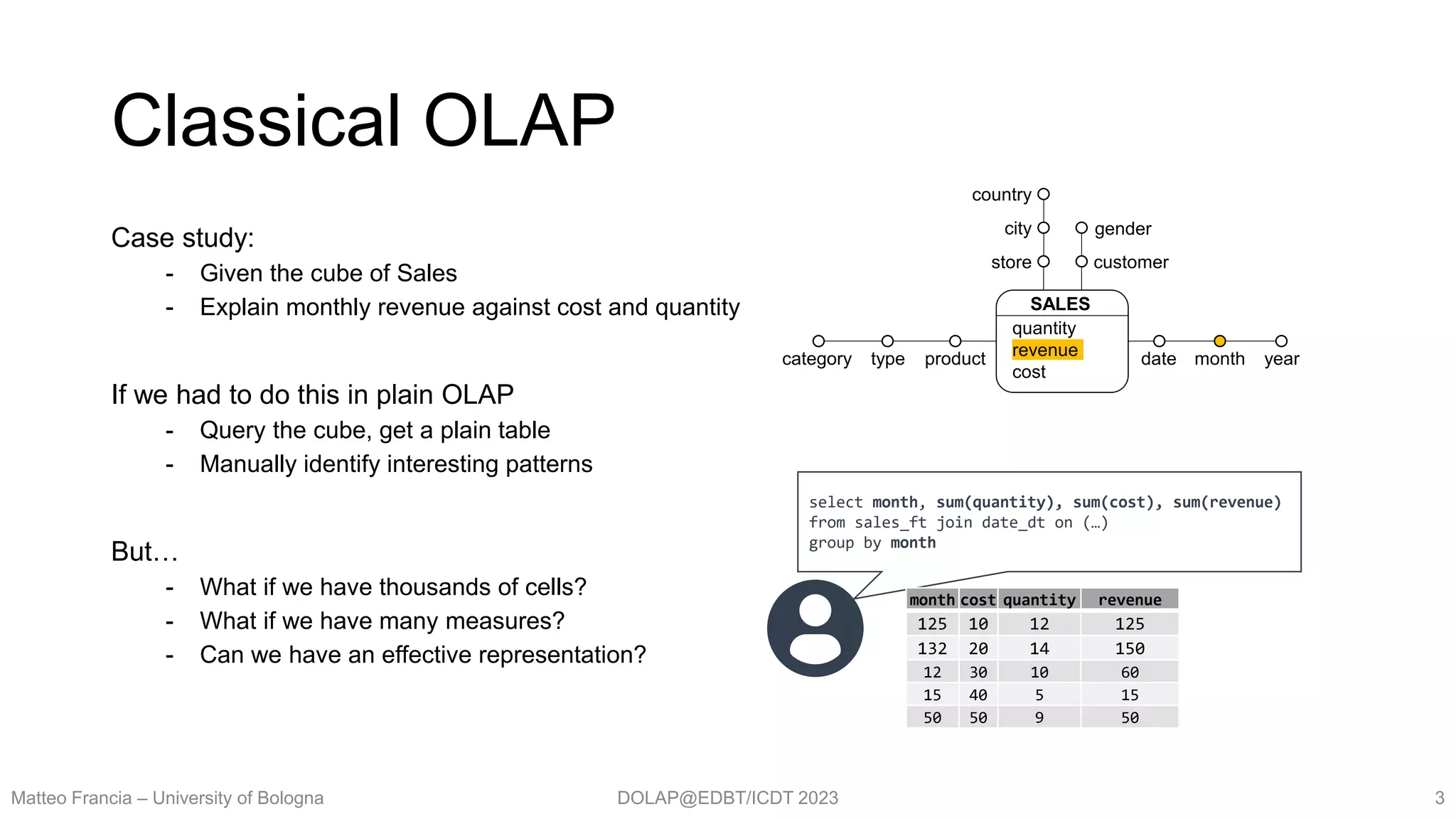
![DOLAP@EDBT/ICDT 2023
Intentional OLAP: Explain
`Explain` intention:
with cube explain m [ for P ] by l1,…,ln [ against m1, ..., mr ]
“Explained” measure: m
Selection predicate: P (consider all facts if omitted)
Group-by set: l1,…,ln (at least one level)
Measures: m1, ..., mr (compute against all measures if omitted)
Semantics translates into an execution plan
i. Execute query for given cube,
measures, predicate, group-by set
ii. Apply models explaining relationships
through components
iii. Rank components by interestingness
iv. Return effective visualization
Matteo Francia – University of Bologna 4
with sales explain
revenue by month
Analytic dashboard
R² = 0.9901
revenue
quantity
month cost quantity revenue
125 10 12 125
132 20 14 150
12 30 10 60
15 40 5 15
50 50 9 50](https://image.slidesharecdn.com/slides-230328124515-687c8704/75/DOLAP2023-The-Whys-and-Wherefores-of-Cubes-4-2048.jpg)

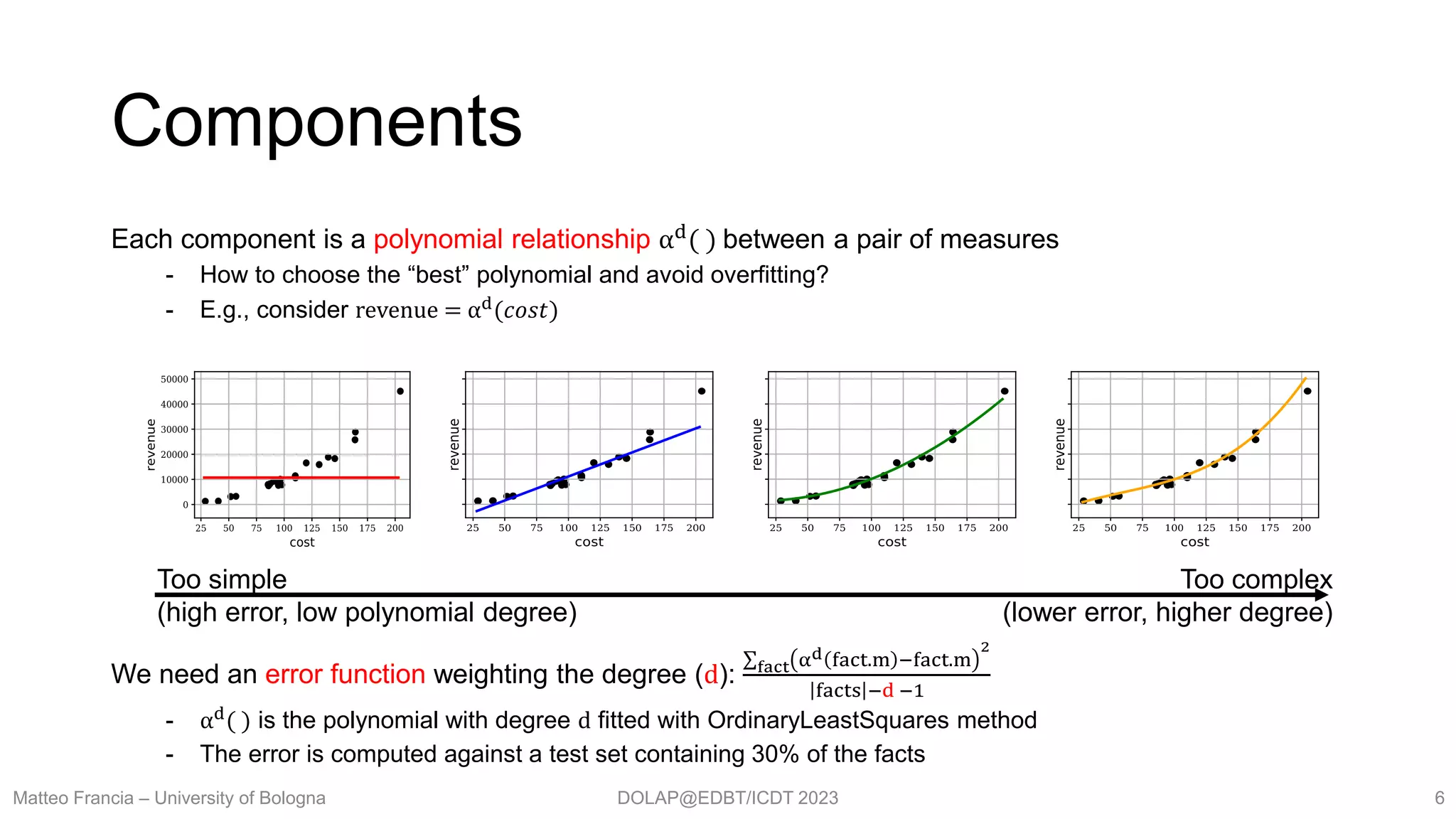
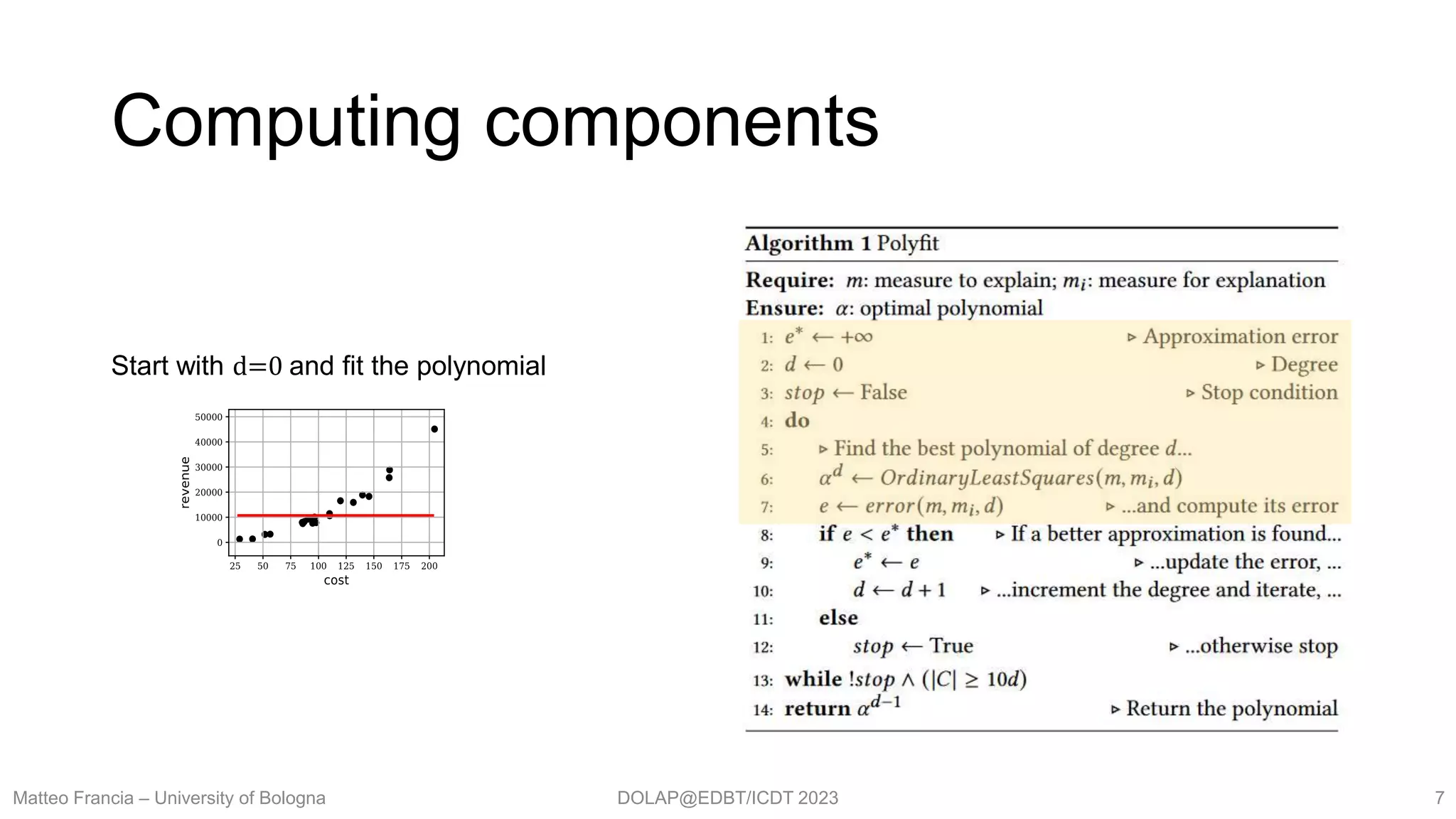
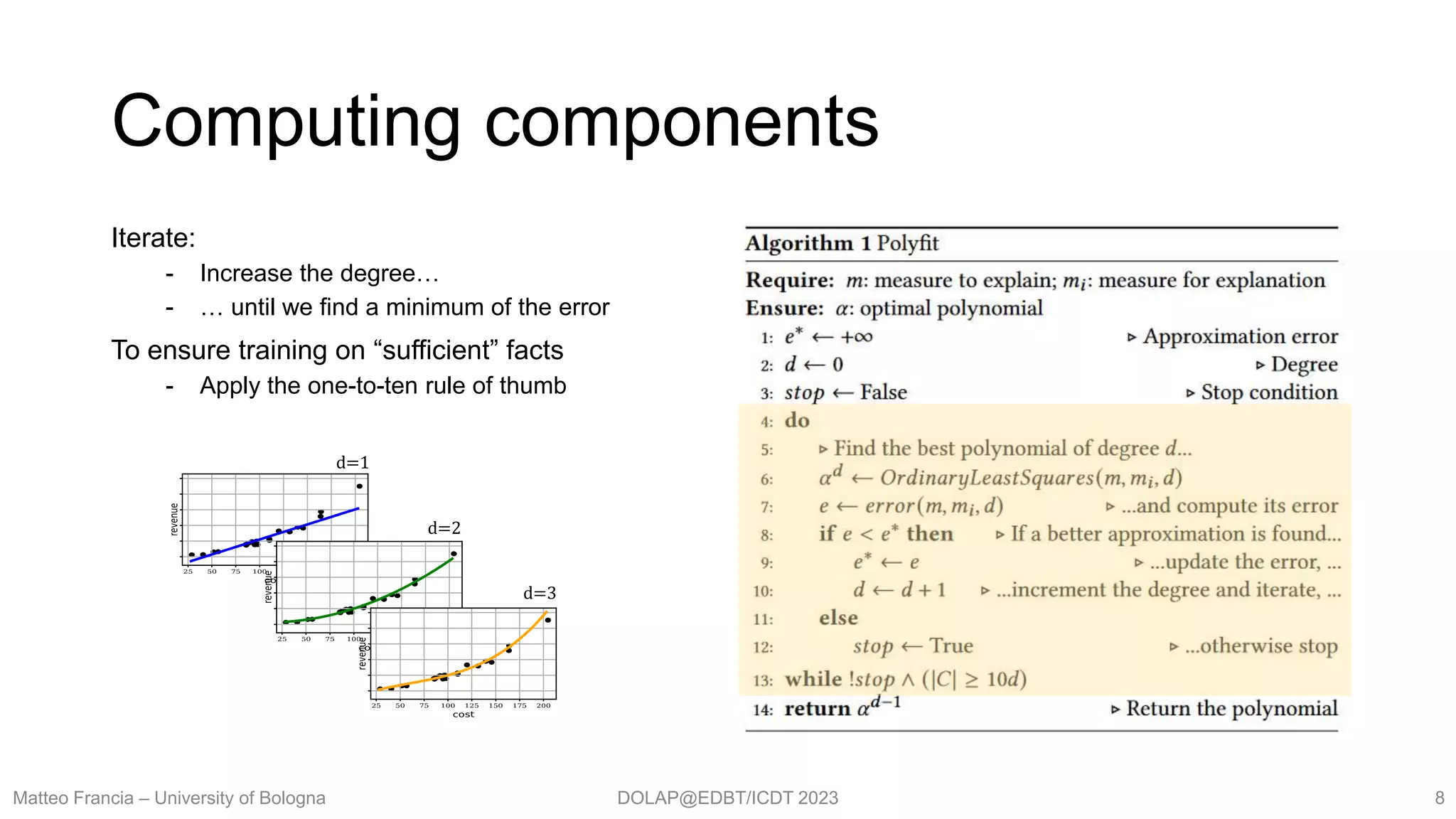

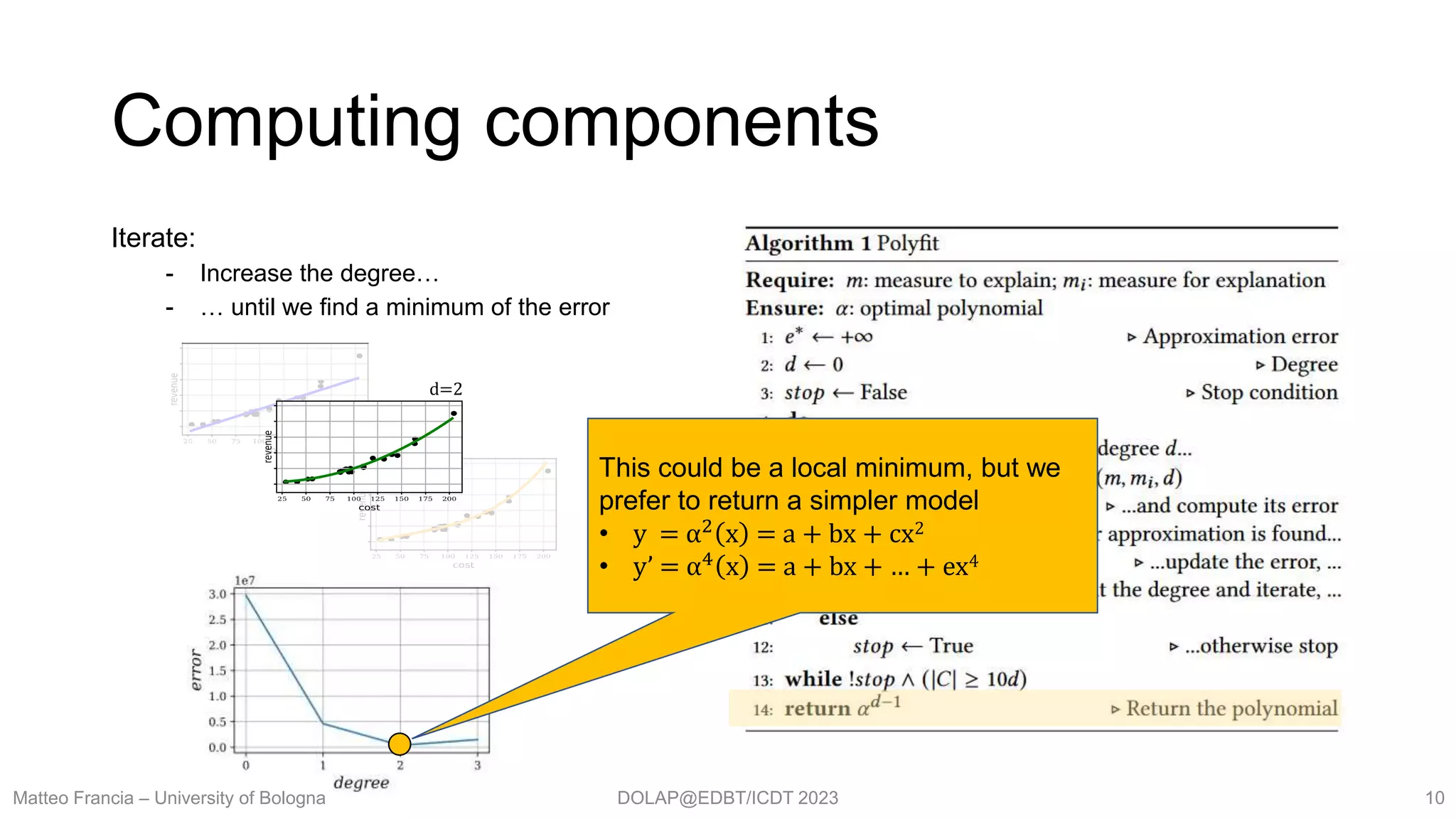
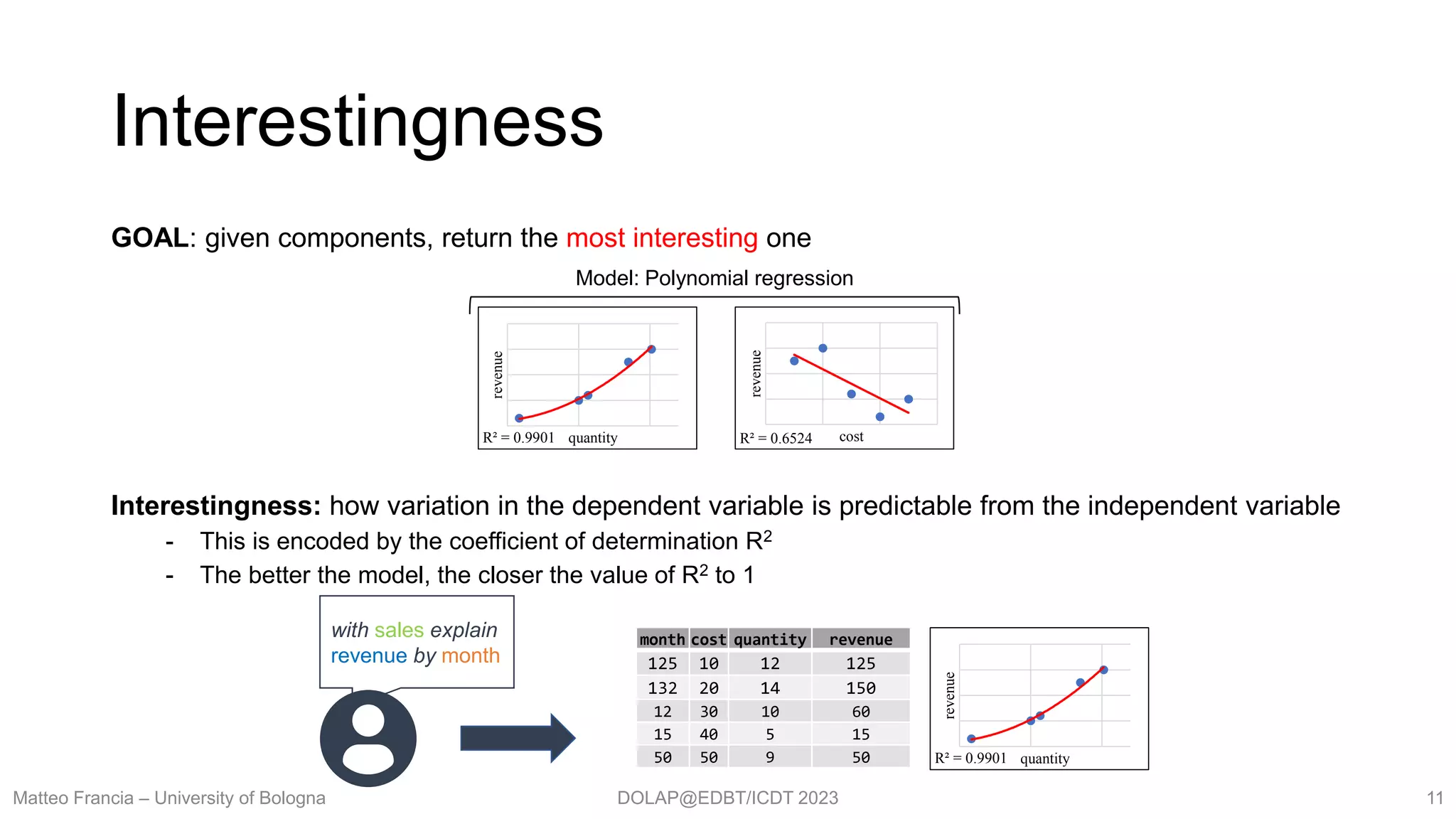
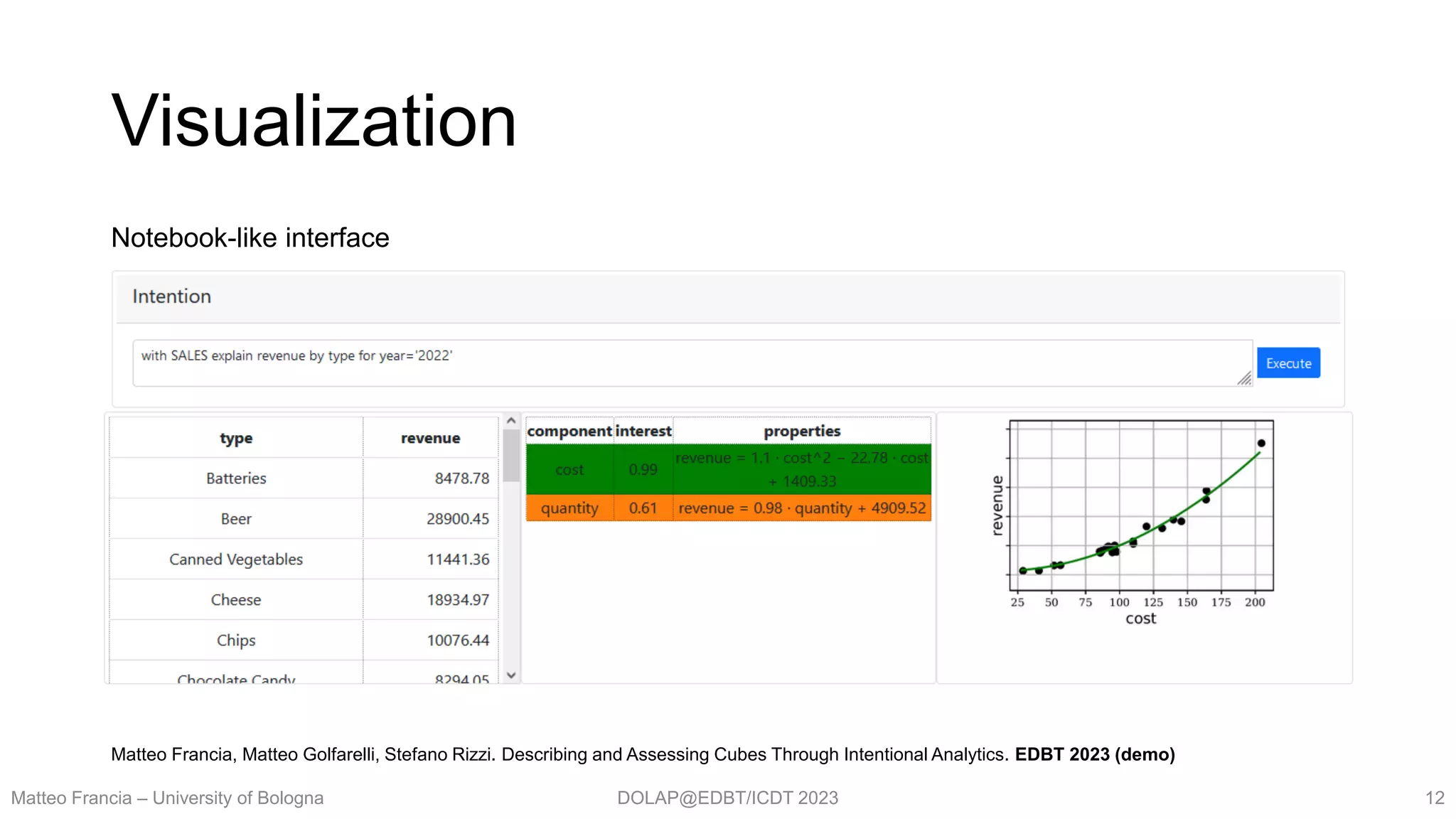
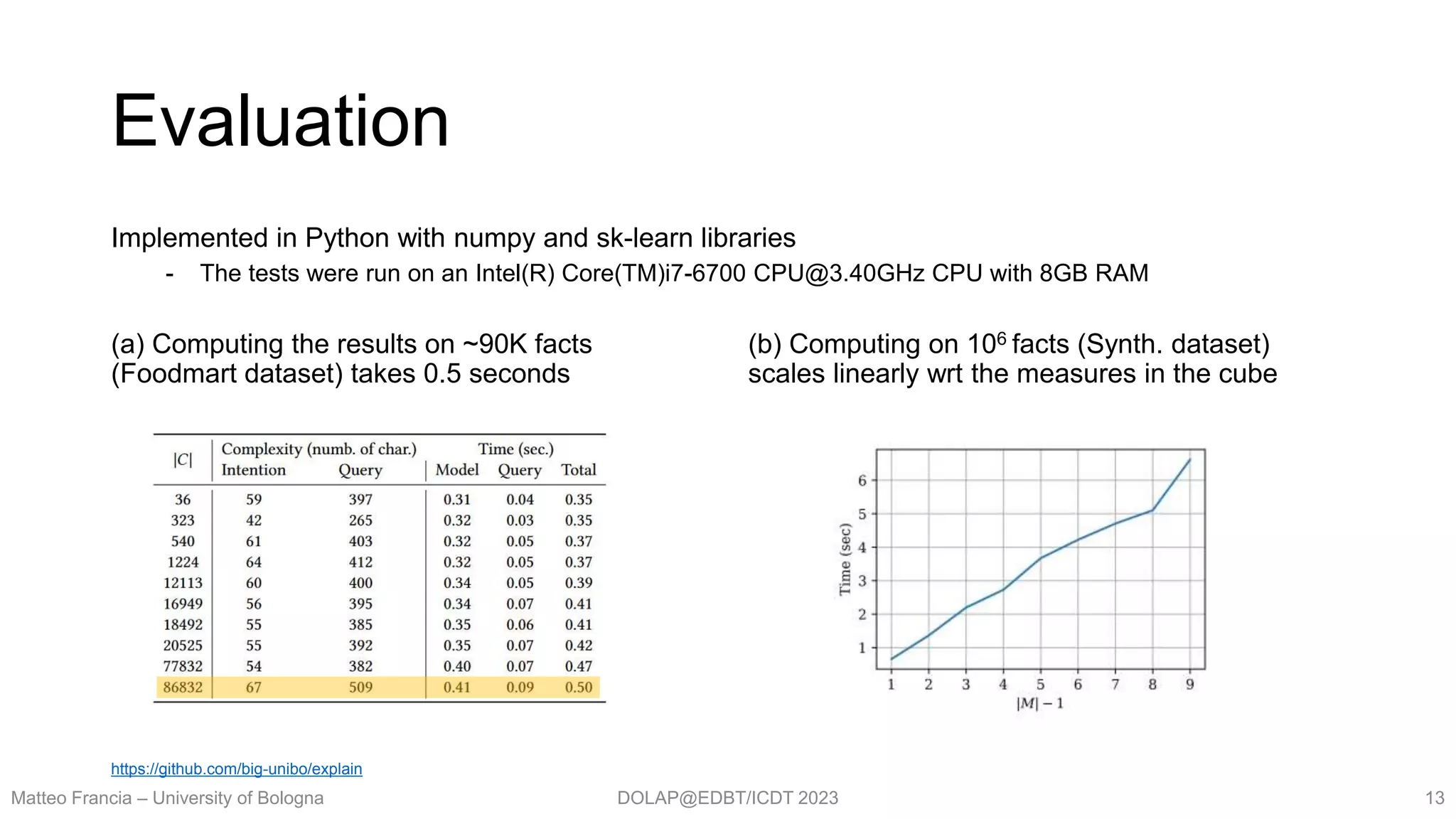
![DOLAP@EDBT/ICDT 2023
Discussion
Overall, this paper is not about:
- (Polynomial) Regression optimization
- “Yet Another” explainability approach
We propose a modular framework where approaches to aggregate data explanation can be plugged
- Regression: return relationships between a dependent variable and one or more independent variables [4]
- Data lineage: which database tuple(s) caused that output to the query? [1]
- Intervention: an input is a cause to an output if a change affects the output [2, 3]
The added value is in the IAM paradigm and augmented analytics
- Data scientists can express high-level intentions…
- … and the system (automatically) selects the most interesting explanations
- … coupled with data and visualization
14
[1] Alexandra Meliou et al. 2010. The Complexity of Causality and Responsibility for Query Answers and non-Answers. VLDB
[2] Sudeepa Roy et al. 2014. A formal approach to finding explanations for database queries. SIGMOD
[3] Zhengjie Miao et al. 2019. LensXPlain: Visualizing and Explaining Contributing Subsets for Aggregate Query Answers. VLDB
[4] Fotis Savva et al. 2018. Explaining Aggregates for Exploratory Analytics. BigData.
https://xkcd.com/605/](https://image.slidesharecdn.com/slides-230328124515-687c8704/75/DOLAP2023-The-Whys-and-Wherefores-of-Cubes-14-2048.jpg)
